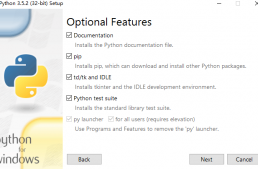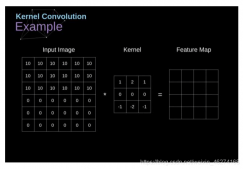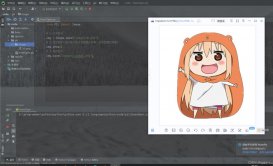数据增强做了什么
数据增强是非常重要的提高目标检测算法鲁棒性的手段,学习一下对身体有好处!
数据增强其实就是让图片变得更加多样。比如说原图是一个电脑
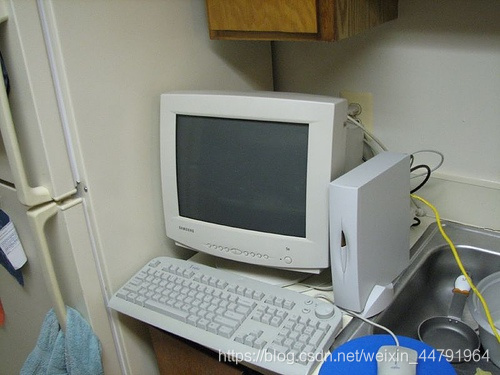
如果不使用数据增强的话这个电脑就只是一个电脑,每次训练的电脑都是这样的样子的,但是我们实际生活中电脑是多样的。
因此我们可以通过改变亮度,图像扭曲等方式使得图像变得更加多种多样,如下图所示,尽管亮度,形态发生了细微改变,但本质上,这些东西都依然是电脑。
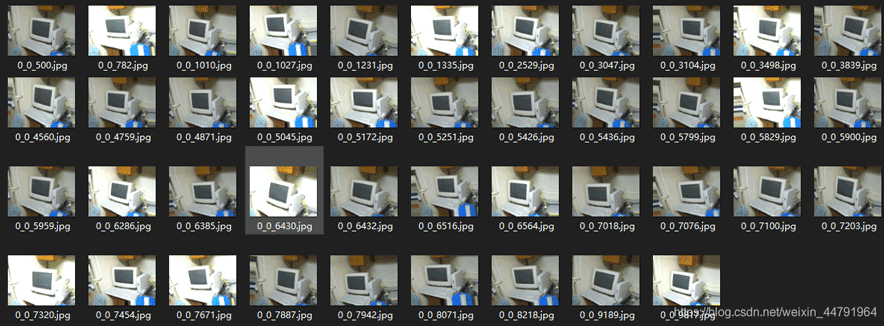
改变后的图片放入神经网络进行训练可以提高网络的鲁棒性,降低各方面额外因素对识别的影响。
目标检测中的图像增强
在目标检测中如果要增强数据,并不是直接增强图片就好了,还要考虑到图片扭曲后框的位置。
也就是框的位置要跟着图片的位置进行改变。
如果大家对我的目标检测代码有少许研究的话,应该都可以看到。我特别喜欢用这个数据增强代码:
def get_random_data(annotation_line, input_shape, random=True, max_boxes=20, jitter=.5, hue=.1, sat=1.5, val=1.5, proc_img=True):
'''random preprocessing for real-time data augmentation'''
line = annotation_line.split()
image = Image.open(line[0])
iw, ih = image.size
h, w = input_shape
box = np.array([np.array(list(map(int,box.split(',')))) for box in line[1:]])
# 对图像进行缩放并且进行长和宽的扭曲
new_ar = w/h * rand(1-jitter,1+jitter)/rand(1-jitter,1+jitter)
scale = rand(.25, 2)
if new_ar < 1:
nh = int(scale*h)
nw = int(nh*new_ar)
else:
nw = int(scale*w)
nh = int(nw/new_ar)
image = image.resize((nw,nh), Image.BICUBIC)
# 将图像多余的部分加上灰条
dx = int(rand(0, w-nw))
dy = int(rand(0, h-nh))
new_image = Image.new('RGB', (w,h), (128,128,128))
new_image.paste(image, (dx, dy))
image = new_image
# 翻转图像
flip = rand()<.5
if flip: image = image.transpose(Image.FLIP_LEFT_RIGHT)
# 色域扭曲
hue = rand(-hue, hue)
sat = rand(1, sat) if rand()<.5 else 1/rand(1, sat)
val = rand(1, val) if rand()<.5 else 1/rand(1, val)
x = rgb_to_hsv(np.array(image)/255.)
x[..., 0] += hue
x[..., 0][x[..., 0]>1] -= 1
x[..., 0][x[..., 0]<0] += 1
x[..., 1] *= sat
x[..., 2] *= val
x[x>1] = 1
x[x<0] = 0
image_data = hsv_to_rgb(x) # numpy array, 0 to 1
# 将box进行调整
box_data = np.zeros((max_boxes,5))
if len(box)>0:
np.random.shuffle(box)
box[:, [0,2]] = box[:, [0,2]]*nw/iw + dx
box[:, [1,3]] = box[:, [1,3]]*nh/ih + dy
if flip: box[:, [0,2]] = w - box[:, [2,0]]
box[:, 0:2][box[:, 0:2]<0] = 0
box[:, 2][box[:, 2]>w] = w
box[:, 3][box[:, 3]>h] = h
box_w = box[:, 2] - box[:, 0]
box_h = box[:, 3] - box[:, 1]
box = box[np.logical_and(box_w>1, box_h>1)] # discard invalid box
if len(box)>max_boxes: box = box[:max_boxes]
box_data[:len(box)] = box
return image_data, box_data
里面有一些比较重要的参数如:
scale = rand(.25, 2)jitter=.5;hue=.1;sat=1.5;val=1.5;
其中:
1、scale代表原图片的缩放比率,rand(.25, 2)表示在0.25到2之间缩放。
2、jitter代表原图片的宽高的扭曲比率,jitter=.5表示在0.5到1.5之间扭曲。
3、hue=.1,sat=1.5,val=1.5;分别代表hsv色域中三个通道的扭曲,分别是:色调(H),饱和度(S),明度(V)。
实际效果如下:
原图:
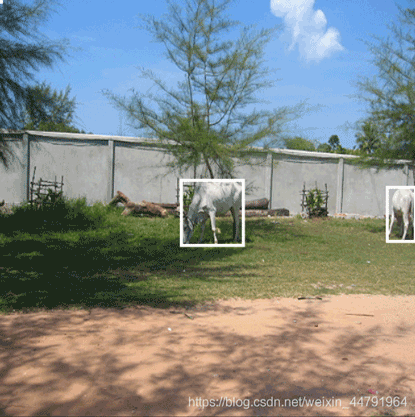
增强后:
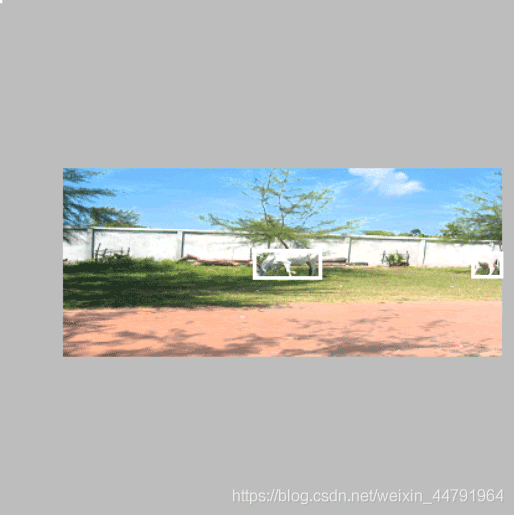
全部代码
全部代码构成如下:
from PIL import Image, ImageDraw
import numpy as np
from matplotlib.colors import rgb_to_hsv, hsv_to_rgb
def rand(a=0, b=1):
return np.random.rand()*(b-a) + a
def get_random_data(annotation_line, input_shape, random=True, max_boxes=20, jitter=.5, hue=.1, sat=1.5, val=1.5, proc_img=True):
'''random preprocessing for real-time data augmentation'''
line = annotation_line.split()
image = Image.open(line[0])
iw, ih = image.size
h, w = input_shape
box = np.array([np.array(list(map(int,box.split(',')))) for box in line[1:]])
# 对图像进行缩放并且进行长和宽的扭曲
new_ar = w/h * rand(1-jitter,1+jitter)/rand(1-jitter,1+jitter)
scale = rand(.25,2)
if new_ar < 1:
nh = int(scale*h)
nw = int(nh*new_ar)
else:
nw = int(scale*w)
nh = int(nw/new_ar)
image = image.resize((nw,nh), Image.BICUBIC)
# 将图像多余的部分加上灰条
dx = int(rand(0, w-nw))
dy = int(rand(0, h-nh))
new_image = Image.new('RGB', (w,h), (128,128,128))
new_image.paste(image, (dx, dy))
image = new_image
# 翻转图像
flip = rand()<.5
if flip: image = image.transpose(Image.FLIP_LEFT_RIGHT)
# 色域扭曲
hue = rand(-hue, hue)
sat = rand(1, sat) if rand()<.5 else 1/rand(1, sat)
val = rand(1, val) if rand()<.5 else 1/rand(1, val)
x = rgb_to_hsv(np.array(image)/255.)
x[..., 0] += hue
x[..., 0][x[..., 0]>1] -= 1
x[..., 0][x[..., 0]<0] += 1
x[..., 1] *= sat
x[..., 2] *= val
x[x>1] = 1
x[x<0] = 0
image_data = hsv_to_rgb(x) # numpy array, 0 to 1
# 将box进行调整
box_data = np.zeros((max_boxes,5))
if len(box)>0:
np.random.shuffle(box)
box[:, [0,2]] = box[:, [0,2]]*nw/iw + dx
box[:, [1,3]] = box[:, [1,3]]*nh/ih + dy
if flip: box[:, [0,2]] = w - box[:, [2,0]]
box[:, 0:2][box[:, 0:2]<0] = 0
box[:, 2][box[:, 2]>w] = w
box[:, 3][box[:, 3]>h] = h
box_w = box[:, 2] - box[:, 0]
box_h = box[:, 3] - box[:, 1]
box = box[np.logical_and(box_w>1, box_h>1)] # discard invalid box
if len(box)>max_boxes: box = box[:max_boxes]
box_data[:len(box)] = box
return image_data, box_data
def normal_(annotation_line, input_shape):
'''random preprocessing for real-time data augmentation'''
line = annotation_line.split()
image = Image.open(line[0])
box = np.array([np.array(list(map(int,box.split(',')))) for box in line[1:]])
return image, box
if __name__ == "__main__":
with open("2007_train.txt") as f:
lines = f.readlines()
a = np.random.randint(0,len(lines))
line = lines[a]
image_data, box_data = normal_(line,[416,416])
img = image_data
for j in range(len(box_data)):
thickness = 3
left, top, right, bottom = box_data[j][0:4]
draw = ImageDraw.Draw(img)
for i in range(thickness):
draw.rectangle([left + i, top + i, right - i, bottom - i],outline=(255,255,255))
img.show()
image_data, box_data = get_random_data(line,[416,416])
print(box_data)
img = Image.fromarray((image_data*255).astype(np.uint8))
for j in range(len(box_data)):
thickness = 3
left, top, right, bottom = box_data[j][0:4]
draw = ImageDraw.Draw(img)
for i in range(thickness):
draw.rectangle([left + i, top + i, right - i, bottom - i],outline=(255,255,255))
img.show()
# img = Image.open(r"F:\Collection\yolo_Collection\keras-yolo3-master\Mobile-yolo3-master/VOCdevkit/VOC2007/JPEGImages/00000.jpg")
# left, top, right, bottom = 527,377,555,404
# draw = ImageDraw.Draw(img)
# draw.rectangle([left, top, right, bottom])
# img.show()
以上就是python目标检测数据增强的代码参数解读及应用的详细内容,更多关于python数据增强参数解读的资料请关注服务器之家其它相关文章!
原文链接:https://blog.csdn.net/weixin_44791964/article/details/105768775


